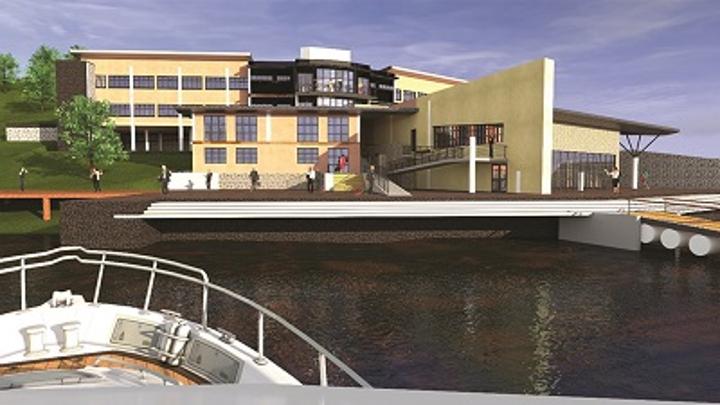Africa-Press – Lesotho. The Lesotho Highlands Development Authority (LHDA) has awarded the M97 million tender for the construction of Polihali Operations Centre to L&M Construction Company.
L&M is a joint venture between LSP Construction which is a Lesotho company and South Africa-registered Mofomo Construction. As stated on LHDA press release, site work has already started following the site handover
earlier this month and the M97 million project is expected to be completed by the end of October 2023. “This is the third of four construction contracts to be awarded, which is specifically
packaged to enhance the participation of small and medium-sized contractors in Phase II. It follows the contracts for construction of the Polihali Village and
the upgrades to Katse Lodge and Katse Village, which were awarded at the end of 2021. All three are part of the Phase II advance infrastructure most of which
will be completed prior to the dam construction,” LHDA Phase II Divisional Manager Ntsoli Maiketso disclosed. The Polihali Operations Centre is a multi-storey office building and visitors’ center which
houses an auditorium, conference rooms and an exhibition hall. The works also comprise underground parking facilities and external works, including service connections to the boundary of
the site, road works within the site, paving and landscaping. The Operations Centre will be used as the Polihali Dam engineer’s offices during the construction of
the dam. On the dam’s completion, it will house the offices of the LHDA operations staff and the visitors’ information centre, the hub of Lesotho Highlands Water Project (LHWP) information for tourists coming to the area.
Polihali Infrastructure Consultants comprising of the South African-based Mott MacDonald PDNA (Pty) Ltd and Khatleli Tomane Moteane Architects (Pty) Ltd of Lesotho was
awarded the contract for the planning, design and construction supervision of the Project housing and associated infrastructure in 2015. Phase II of the LHWP
builds on the successful completion of Phase I in 2003. The LHWP delivers water to the Gauteng region of South Africa (SA) and utilizes the water delivery
system to generate hydroelectricity in Lesotho. Phase II will increase the current water supply rate of 780 million cubic metres per annum incrementally
to approximately 1 270 million cubic metres per annum. The increased water flow will simultaneously increase the energy generated by the ‘Muela hydropower
plant, a further step in the process of securing an independent power supply to meet Lesotho’s domestic needs. The Government of Lesotho has approved the commencement of the Phase II hydropower tender
design. The procurement of a service provider for the Detailed Design and Supervision of the Oxbow Hydropower Scheme has already started. On other developments, last Thursday 230 bricklayers from around Mapholaneng graduated
from the Trade Tests through the support of LHDA. In that event, LHDA Chief Executive Officer Tente Tente quoted that the Treaty governing the LHWP and the
Phase II Agreement commits both Parties to take all reasonable measures to ensure that the implementation, operation and maintenance of the project are
compatible with the protection and the existing quality of the environment and in particular, shall pay due regard to the maintenance of the welfare of the
persons and communities immediately affected by the Project. He also said the initiative of examining and awarding bricklayers with certificates was to
empower them as the project is in their area. The LHWP is a multi-phased, multi-billion Maloti/Rand project between the governments of the Kingdom of Lesotho and SA.
It comprises water transfer and hydropower generation components with associated ancillary developments. The water transfer component entails the construction of dams and tunnels in Lesotho, enhancing the use of water from
the Senqu (Orange) River and its tributaries by storing, regulating, diverting and controlling the flow to effect the delivery of specified quantities of
water to South Africa, and utilizing the delivery system to generate hydro-electric power in Lesotho. The major works of Phase I included the construction of the Katse Dam, the transfer and
delivery tunnels, Matsoku Weir, ‘Muela Hydropower Plant and the Mohale Dam. The Phase II water transfer component comprises a dam at Polihali and a gravity
tunnel that will connect the reservoir at Polihali with the Katse reservoir. The hydropower component comprises the Oxbow Hydropower Scheme. The Lesotho
Highlands Development Authority (LHDA) is the implementing and management authority of the Lesotho Highlands Water Project, on behalf of the government of Lesotho.
For More News And Analysis About Lesotho Follow Africa-Press






